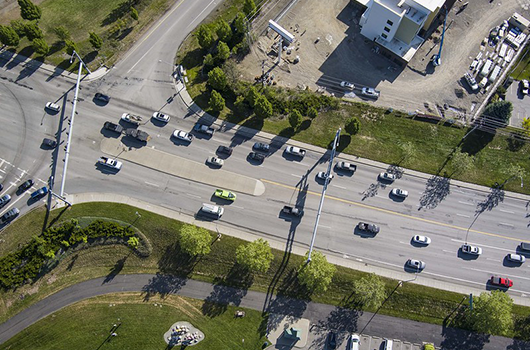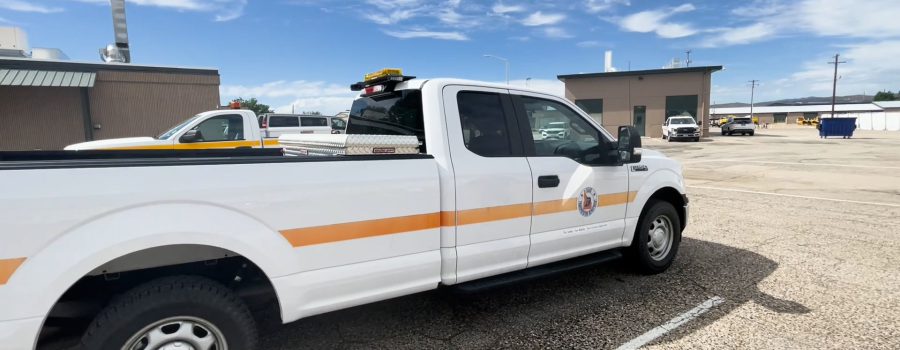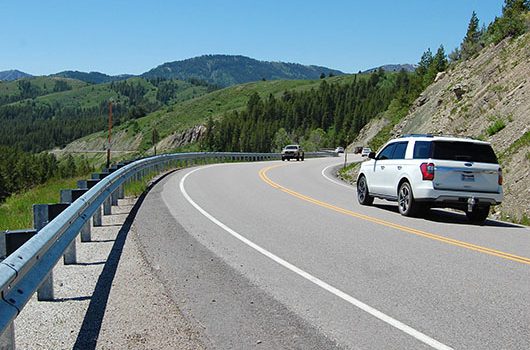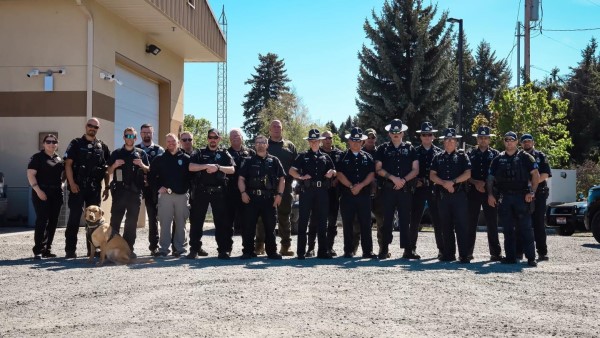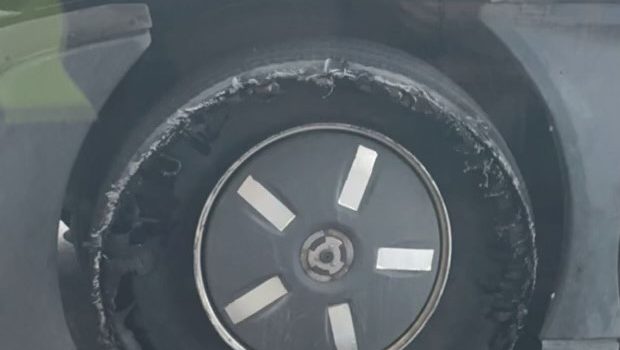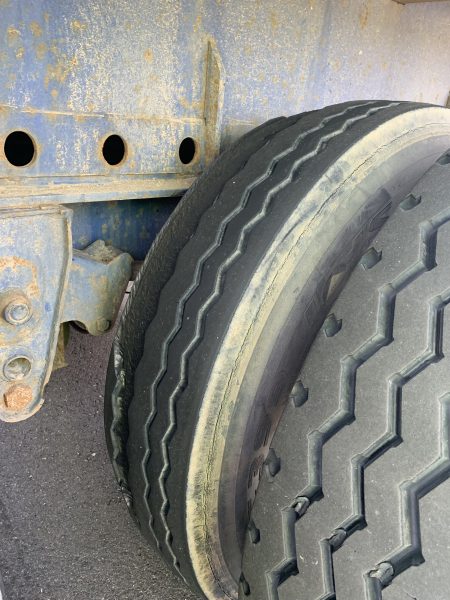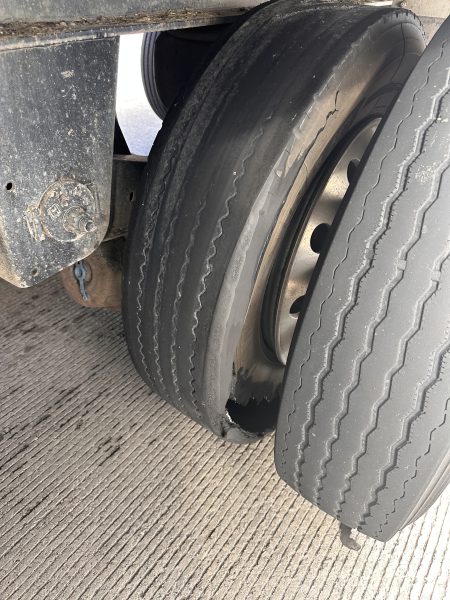ITD receives BNSF ‘Tracking to Zero’ railway safety award

On July 16, the Idaho Transportation Department in District 1 was presented with the BNSF Railway Company’s inaugural “Tracking to Zero” award on behalf of the State of Idaho as one of four state transportation departments honored for dedication to improving the safety of railway grade crossings in their communities last year. Co-awardee DOTs include Montana, Wyoming, and New Mexico.
“Because trains are limited in their ability to prevent a collision, safety gains are better achieved by improving how drivers interact around railroad tracks,” said Richard Scott, BNSF’s Assistant Director of Public Projects.
This award is a first-of-its-kind initiative to recognize agencies whose proactive approach to partnership and action have resulted in less than one crossing injury incident per one million BNSF train miles traveled in their respective states per year. By working with state transportation agencies and community partners BNSF says it maintains the lowest grade crossing collision rate in the industry.
While Idaho is the 14th-largest state in the country, the Idaho portion of the BNSF Railway network exists exclusively within the Panhandle region of District 1, with approximately 130 miles of railway and 91 crossings that stretch between Bonners Ferry and Coeur d’Alene, and from the Washington to Montana state lines.
“It’s not just railroad crossings on state routes that we manage,” District Traffic Engineer Nathan Herbst said. ITD is responsible for all railroad crossings not on private property, meaning there is state responsibility for those occurring on county and local roads as well.
“As an agency, each year we make progress to upgrade more and more crossings throughout the state. Ideally, the goal for ITD is to eventually see some type of active control or signalization at every at-grade crossing in Idaho,” Herbst said.
On average, the cost to enhance these crossings can be anywhere from $500,000 to $1 million, which can come from state or federal funding or through grant opportunities.
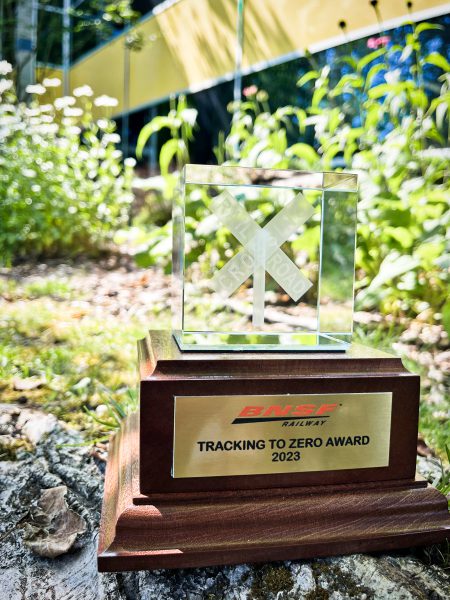 “It truly is a team effort between the agencies,” Traffic Engineering Manager Lee Bernardi stated. Every year members of ITD’s traffic team meet with BNSF specialists in the field at various crossings to review them from a safety perspective and work together to decide the best course of action to improve safety.
“It truly is a team effort between the agencies,” Traffic Engineering Manager Lee Bernardi stated. Every year members of ITD’s traffic team meet with BNSF specialists in the field at various crossings to review them from a safety perspective and work together to decide the best course of action to improve safety.
“We are all experts in our own arenas, so by combining that expertise and insight from the people who are interacting with those crossings on a daily basis, like train engineers who observe fatalities, incidents and near-misses, we are able to anticipate safety risks and create a mitigation plan before a crash occurs,” said Bernardi.
Over the years, enhancements to safety have resulted from physical improvements such as constructing grade-separated crossings and enhanced signalization systems, but what has likely been the most impactful measure of success for ITD has been the meaningful and collaborative partnership with BNSF.
This relationship continually supports timely and effective safety measures embedded within routine transportation projects. It played a key role in the successful bid to secure grant funding for the SH-53 Pleasant View Interchange. That project, slated to begin construction later this summer and ultimately eliminate three at-grade crossings, will completely overhaul the safety dynamic of roadway-railway interactions along the corridor.
In 2023, several projects throughout the district served as a testament to agencies’ cohesive alliance. ITD created and posted safe access points for railway crews while they built a second railroad bridge across Lake Pend Oreille, coordinated to obtain interim railroad permits to keep active construction moving on SH-53 near Rathdrum, and worked together to overcome obstacles with regard to impacted property while expanding US-2 and improving vertical clearance under a railroad bridge in Sandpoint.
A huge point of pride with this award, according to Bernardi, is the fact that it isn’t something ITD was intentionally trying to achieve.
“We didn’t know until about a week ago that we had been selected to receive this award, so this focus on safety and prevention is honestly the organic result of our agencies commitment to the wellbeing of our transportation users and our productive partnership with BNSF,” Bernardi explained.
Add it to the list of things that make our state a wonderful place to live, work and visit—drivers in Idaho can count on peace of mind knowing that safety on our roadways, and railways, remains a top priority for all.
“We are excited at the opportunity to maintain our status as a top contender for this award for years to come and will continue to support ‘Tracking Towards Zero’ with our partners at BNSF,” Bernardi proclaimed.



